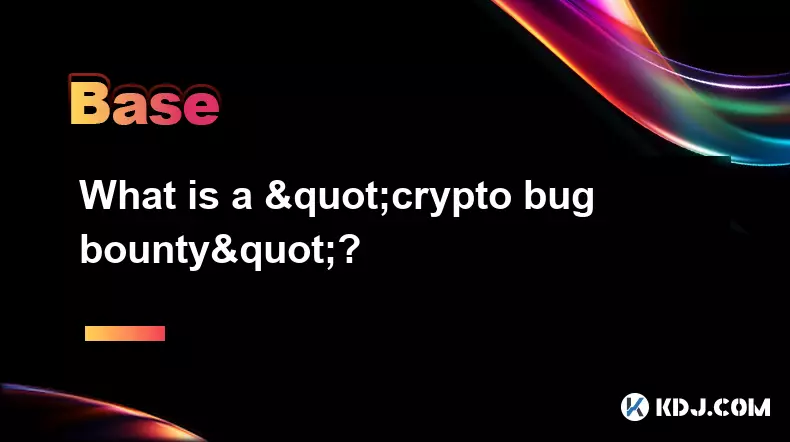-
 Bitcoin
Bitcoin $111500
0.05% -
 Ethereum
Ethereum $4439
1.69% -
 XRP
XRP $2.868
1.24% -
 Tether USDt
Tether USDt $1.000
-0.01% -
 BNB
BNB $859.0
1.00% -
 Solana
Solana $211.2
3.36% -
 USDC
USDC $0.9997
-0.03% -
 Dogecoin
Dogecoin $0.2177
2.23% -
 TRON
TRON $0.3403
0.32% -
 Cardano
Cardano $0.8351
1.20% -
 Chainlink
Chainlink $23.62
1.09% -
 Hyperliquid
Hyperliquid $45.59
1.56% -
 Ethena USDe
Ethena USDe $1.001
0.00% -
 Sui
Sui $3.368
2.46% -
 Bitcoin Cash
Bitcoin Cash $599.2
3.37% -
 Stellar
Stellar $0.3648
0.00% -
 Avalanche
Avalanche $25.30
4.74% -
 Hedera
Hedera $0.2213
2.22% -
 Cronos
Cronos $0.2714
3.55% -
 UNUS SED LEO
UNUS SED LEO $9.504
-0.78% -
 Litecoin
Litecoin $112.6
0.94% -
 Toncoin
Toncoin $3.179
0.95% -
 Shiba Inu
Shiba Inu $0.00001247
0.37% -
 Polkadot
Polkadot $3.863
1.58% -
 Uniswap
Uniswap $9.631
0.60% -
 Bitget Token
Bitget Token $5.067
0.00% -
 Dai
Dai $1.000
0.01% -
 World Liberty Financial
World Liberty Financial $0.2154
-6.17% -
 Monero
Monero $269.4
2.09% -
 Aave
Aave $325.8
3.92%
What is a "crypto bug bounty"?
Crypto bug bounty programs incentivize ethical hackers to find and report security flaws in blockchain systems, helping projects fix vulnerabilities before they’re exploited.
Sep 03, 2025 at 04:54 pm

Crypto Bug Bounty: An Overview
A crypto bug bounty is a program launched by blockchain projects or cryptocurrency platforms to invite security researchers and ethical hackers to identify vulnerabilities within their systems. These programs serve as a proactive defense mechanism, allowing developers to fix critical issues before malicious actors exploit them. In return for their findings, participants receive monetary rewards, often paid in the platform’s native cryptocurrency.
The primary goal of a crypto bug bounty is to strengthen the security infrastructure of decentralized applications (dApps), smart contracts, wallets, and exchanges by leveraging the global community of cybersecurity experts.How Crypto Bug Bounty Programs Work
- Blockchain projects publicly announce their bug bounty initiative, outlining the scope, rules, and reward tiers.
- Security researchers analyze the codebase, focusing on smart contracts, consensus mechanisms, or API integrations.
- When a vulnerability is discovered, the researcher submits a detailed report through a designated platform or portal.
- The project’s security team reviews the submission, verifies the flaw, and determines its severity level.
- Rewards are distributed based on the impact of the bug—ranging from minor UI issues to critical exploits that could drain funds.
Types of Vulnerabilities Targeted
- Smart contract logic flaws, such as reentrancy attacks or integer overflows, which can lead to fund theft.
- Private key exposure risks in wallet interfaces or key generation algorithms.
- Consensus layer weaknesses that could enable double-spending or network partitioning.
- Frontend manipulation in decentralized exchanges that might allow order book spoofing.
- API endpoint vulnerabilities that expose sensitive user data or enable unauthorized transactions.
Notable Examples in the Crypto Space
- Ethereum Foundation has run multiple bounty campaigns, rewarding researchers who identified flaws in the Ethereum Virtual Machine (EVM) or client implementations.
- Chainlink offered substantial rewards for vulnerabilities found in its oracle network, ensuring data integrity across smart contracts.
- Binance Smart Chain launched a program targeting validator node security and cross-chain bridge mechanisms.
- Uniswap has incentivized audits of its automated market maker (AMM) contracts, preventing potential manipulation of liquidity pools.
- Polkadot’s bounty system focuses on runtime logic and parachain integration bugs within its multi-chain framework.
Frequently Asked Questions
What qualifies as a valid bug in a crypto bug bounty?A valid bug is a confirmed security vulnerability that poses a tangible risk to the system’s integrity, availability, or confidentiality. This includes exploitable flaws in code execution, authentication bypasses, or economic model manipulations.
Are all blockchain projects required to have a bug bounty program?No, participation is voluntary. However, high-profile projects handling large asset volumes often adopt these programs to build trust and demonstrate commitment to security.
Can anonymous researchers participate in these programs?Many platforms allow pseudonymous participation, though identity verification may be required before reward distribution to comply with anti-money laundering (AML) regulations.
How are bounty amounts determined?Rewards are typically scaled by severity—low-risk bugs may earn a few hundred dollars, while critical vulnerabilities like remote code execution or fund freezing can yield six- or seven-figure payouts in cryptocurrency.
Disclaimer:info@kdj.com
The information provided is not trading advice. kdj.com does not assume any responsibility for any investments made based on the information provided in this article. Cryptocurrencies are highly volatile and it is highly recommended that you invest with caution after thorough research!
If you believe that the content used on this website infringes your copyright, please contact us immediately (info@kdj.com) and we will delete it promptly.
- Max Keiser, El Salvador, and Bitcoin: A Budding Bromance?
- 2025-09-03 22:25:15
- XRP Cash Flow: Turning $100,000 into a Daily Stream?
- 2025-09-03 22:45:12
- Ethereum Price, Q4 Prediction, and Layer Brett: What's the Buzz?
- 2025-09-03 22:45:12
- Bitcoin, Safety Net, and ChangeNOW: Navigating the Crypto Landscape Like a New Yorker
- 2025-09-03 22:50:12
- Pump.fun's Fee Revolution: Dynamic Fees and the Future of Creator Economics
- 2025-09-03 22:55:12
- Trust Wallet, Tokenized Stocks, and Ondo: A New Era for Global Finance?
- 2025-09-03 23:00:12
Related knowledge

What is "backtesting" a crypto trading strategy?
Sep 03,2025 at 10:55am
Understanding Backtesting in Crypto TradingBacktesting is the process of evaluating a trading strategy by applying it to historical market data. Trade...

What is a "crypto trading bot" and do they work?
Sep 02,2025 at 04:19pm
Understanding Crypto Trading Bots1. A crypto trading bot is a software application designed to automate the process of buying and selling cryptocurren...

What is a "copy trading" platform?
Sep 02,2025 at 07:00pm
Understanding Copy Trading in the Cryptocurrency Space1. A copy trading platform allows users to automatically replicate the trades of experienced inv...

What is "social trading" for crypto?
Sep 03,2025 at 09:00pm
Understanding Social Trading in the Cryptocurrency Space1. Social trading refers to a method where investors observe, follow, and automatically replic...

What is a "crypto basket" or index?
Sep 03,2025 at 07:01am
Understanding Crypto Baskets and Their Role in Digital Asset Investment1. A crypto basket refers to a curated collection of multiple cryptocurrencies ...

What are "impermanent loss" calculators?
Sep 03,2025 at 12:00pm
Understanding Impermanent Loss in Decentralized Finance1. Impermanent loss is a phenomenon that affects liquidity providers in decentralized exchanges...

What is "backtesting" a crypto trading strategy?
Sep 03,2025 at 10:55am
Understanding Backtesting in Crypto TradingBacktesting is the process of evaluating a trading strategy by applying it to historical market data. Trade...

What is a "crypto trading bot" and do they work?
Sep 02,2025 at 04:19pm
Understanding Crypto Trading Bots1. A crypto trading bot is a software application designed to automate the process of buying and selling cryptocurren...

What is a "copy trading" platform?
Sep 02,2025 at 07:00pm
Understanding Copy Trading in the Cryptocurrency Space1. A copy trading platform allows users to automatically replicate the trades of experienced inv...

What is "social trading" for crypto?
Sep 03,2025 at 09:00pm
Understanding Social Trading in the Cryptocurrency Space1. Social trading refers to a method where investors observe, follow, and automatically replic...

What is a "crypto basket" or index?
Sep 03,2025 at 07:01am
Understanding Crypto Baskets and Their Role in Digital Asset Investment1. A crypto basket refers to a curated collection of multiple cryptocurrencies ...

What are "impermanent loss" calculators?
Sep 03,2025 at 12:00pm
Understanding Impermanent Loss in Decentralized Finance1. Impermanent loss is a phenomenon that affects liquidity providers in decentralized exchanges...
See all articles

























![Litecoin Price Prediction [LTC Crypto Price News] Litecoin Price Prediction [LTC Crypto Price News]](/uploads/2025/09/03/cryptocurrencies-news/videos/litecoin-price-prediction-ltc-crypto-price-news/68b83c0a82563_image_500_375.webp)































































